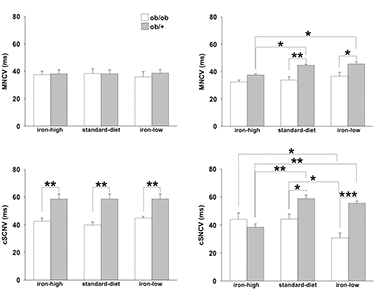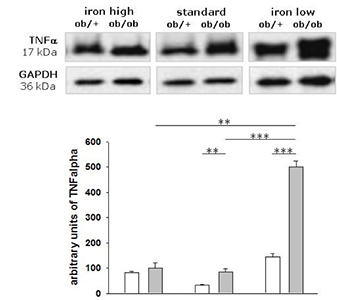 Peripheral diabetic neuropathy (PDN) is a serious complication observed in type 1 and type 2 diabetes mellitus (T1D and T2D) as well as in obesity. The pathophysiology of this neurological disorder includes metabolic, vascular and inflammatory mechanisms but a unifying hypothesis of the culprit pathogenic factors is a matter of debate. Activation of the polyol pathway and phosphokinase C isoforms, oxidative stress and lipid peroxidation, transition metal metabolism disorders, neurotrophic factors, the effects of non enzymatic glycation and autoimmune mechanisms have all been proposed as contributing factors based on various experimental PDN models and on human nerve tissue investigations. PDN leads to peripheral nerve axonal degeneration and impaired regeneration associated with structural and functional changes in endoneural and epineural microvessels and in Schwann cells. Till now, there is no casual therapy against PDN. Our current projects focus on the identification of metabolic and inflammatory mechanisms of PDN to develop new therapeutic strategies.
Peripheral diabetic neuropathy (PDN) is a serious complication observed in type 1 and type 2 diabetes mellitus (T1D and T2D) as well as in obesity. The pathophysiology of this neurological disorder includes metabolic, vascular and inflammatory mechanisms but a unifying hypothesis of the culprit pathogenic factors is a matter of debate. Activation of the polyol pathway and phosphokinase C isoforms, oxidative stress and lipid peroxidation, transition metal metabolism disorders, neurotrophic factors, the effects of non enzymatic glycation and autoimmune mechanisms have all been proposed as contributing factors based on various experimental PDN models and on human nerve tissue investigations. PDN leads to peripheral nerve axonal degeneration and impaired regeneration associated with structural and functional changes in endoneural and epineural microvessels and in Schwann cells. Till now, there is no casual therapy against PDN. Our current projects focus on the identification of metabolic and inflammatory mechanisms of PDN to develop new therapeutic strategies.
The role of iron in development of peripheral diabetic neuropathy in type 2 diabetic, obese, db/db mice.
Funded by Deutsche Diabetes Gesellschaft (DDG) 934300-002
In cooperation with Prof. Dr. Matthias Blüher, Dr. med. Petra Baum, Dr. Maximilian Stockinger, Dr. Joanna Kosacka
Peripheral neuropathy is a serious complication observed in obesity and type 2 diabetes mellitus (T2D). The pathophysiology of this obesity- and diabetes-associated neurological disorder (PDN) includes metabolic, vascular and inflammatory mechanisms but a unifying hypothesis of the culprit pathogenic factors is a matter of debate. Till now, there is no casual therapy against PDN. Our current project is based on previous investigations and preliminary studies which have shown enhanced inflammation as well as electrophysiological and morphological changes in peripheral nerves of animals with obesity and/or type 2 diabetes mellitus. Recently, we have shown a correlation between degree of this disorders and dietary iron concentrations (Fig.1 and 2). In contrast to previous hypotheses suggesting that iron excess might be the most critical pathogenic cofactor, we found a functionally relevant, increase in distal peripheral nerve pathology with chronic iron depletion rather than iron overload which had little effects. Our current project focuses on the identification of the role of iron and nerve inflammation in development of PDN in animal models of obesity and metabolic syndrome (ob/ob mice) as well as obesity and T2D (db/db mice). The identification of metabolic and inflammatory mechanisms of PDN should lead to new therapeutic strategies.

Figure 1: Nerve conduction studies. (a, b): the motor nerve conduction velocities (MNCV) were significantly reduced in all ob/ob mice as compared to the control animals. (c, d): compound sensory nerve conduction velocities (cSNCV) were significantly reduced in ob/ob mice on iron-low diet compared to the other animal groups. Values represent mean ± SEM; *p <0.05; **p <0.01; ***p <0.001; [unpublished data].

Figure 2: Western blot analysis of TNF alpha protein expression in sciatic nerves of ob/ob and ob/+ (control) mice. Values represent mean ± SEM; **p <0.01; ***p <0.001; [unpublished data].
